Abstract
The application of kinetic probes that allow one to determine relative reactivities of biologically relevant substrates with oxidizing intermediates in the Fenton reagent (H2O2 plus Fe2+ in acidic aqueous solution) is described. These results lead to the conclusion that there are two key intermediates with very different reactivity patterns. One (X) is proposed to be an iron complex formed via direct reaction of H2O2 with Fe2+, which reacts with N-nitrosodimethylamine to generate a strong transient absorption at 450 nm. This provides a sensitive spectrophotometric probe of the competitive reactivities toward X of biologically relevant substrates such as nucleic acid components and amino acids. The second intermediate (Y) is probed by its oxidation of the Ru(bpy)2+3 ion (bpy = 2,2'-bipyridine) to a product with an absorption band centered at 500 nm. In the absence of other substrates, Ru(bpy)2+3 is oxidized at rates independent of the Ru concentration, but the product yield is diminished by competing reactions with substrates that can intercept X. Competition studies demonstrate reactivity patterns for X and Y that are clearly distinct from the pattern predicted for the hydroxyl radical, the intermediate commonly invoked in discussions of Fenton oxidations. These data require reevaluation of the mechanisms by which the Fenton reagent oxidizes biological substrates.
Full text
PDF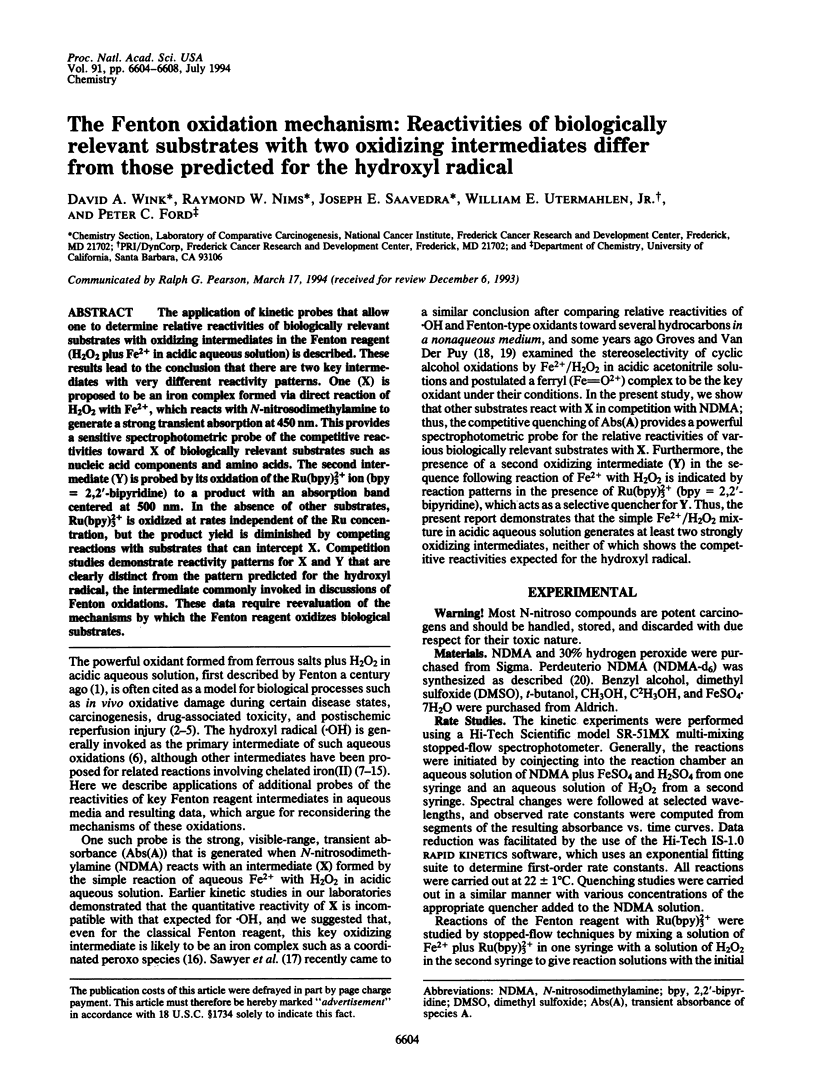
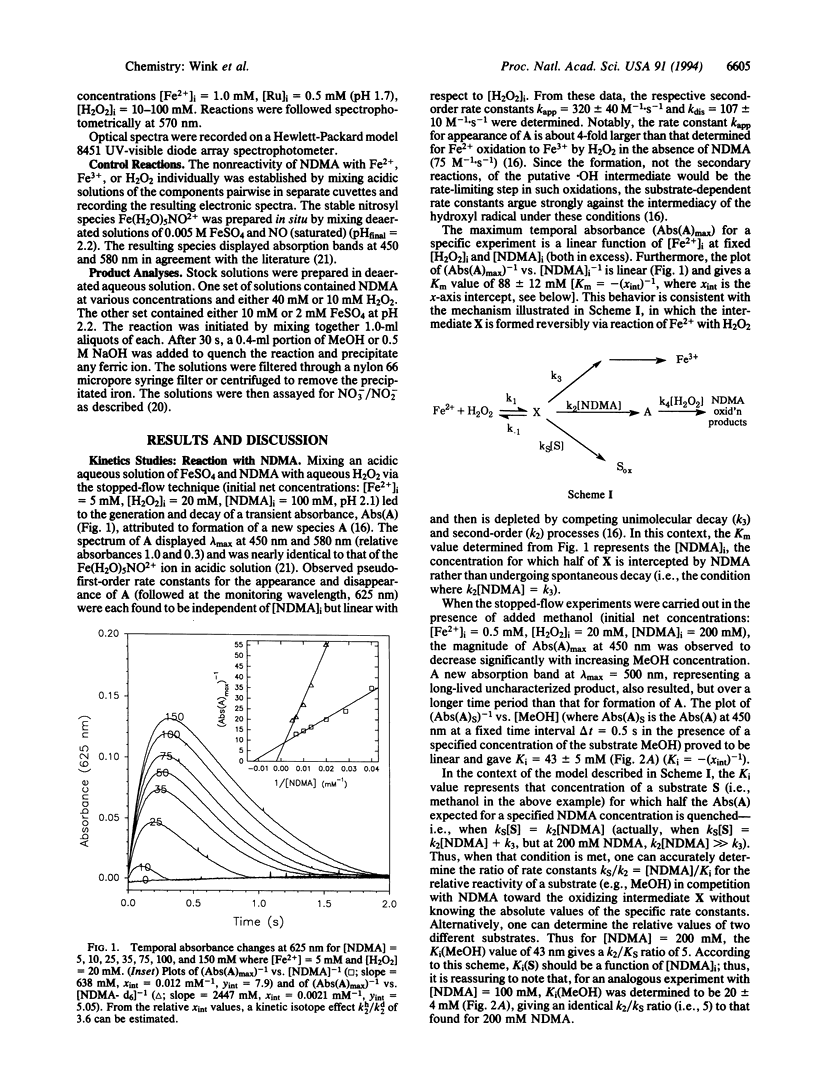
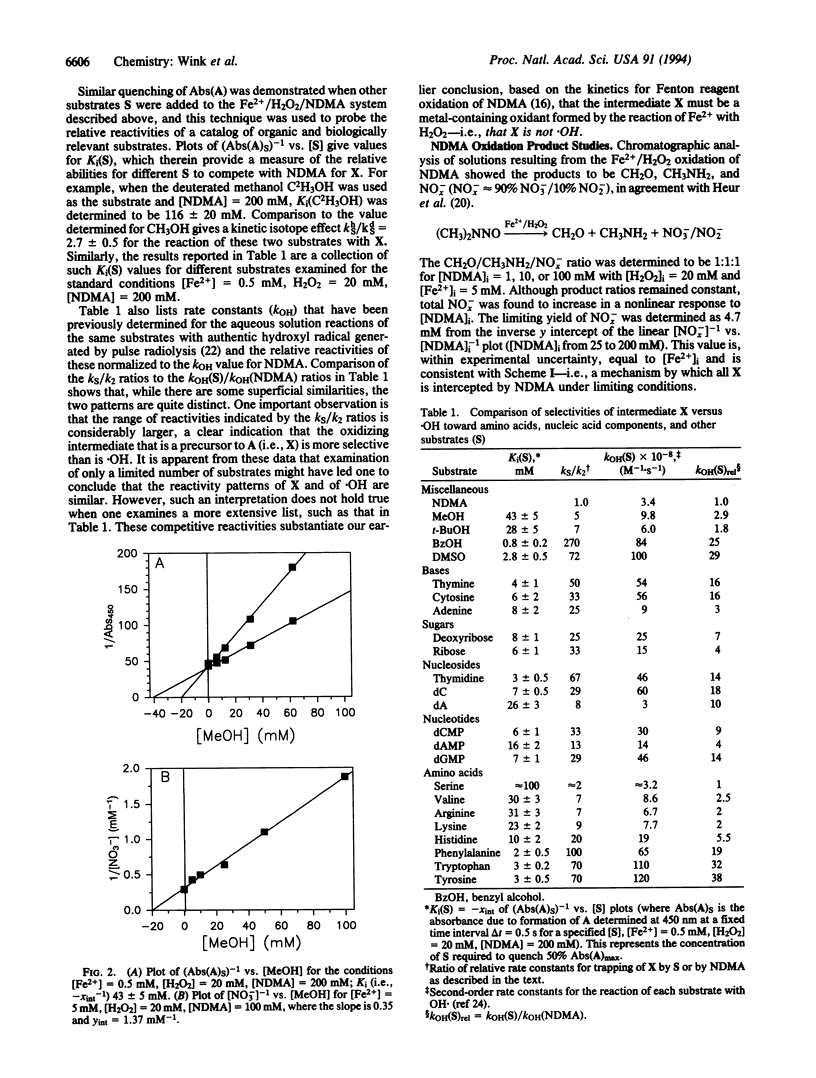
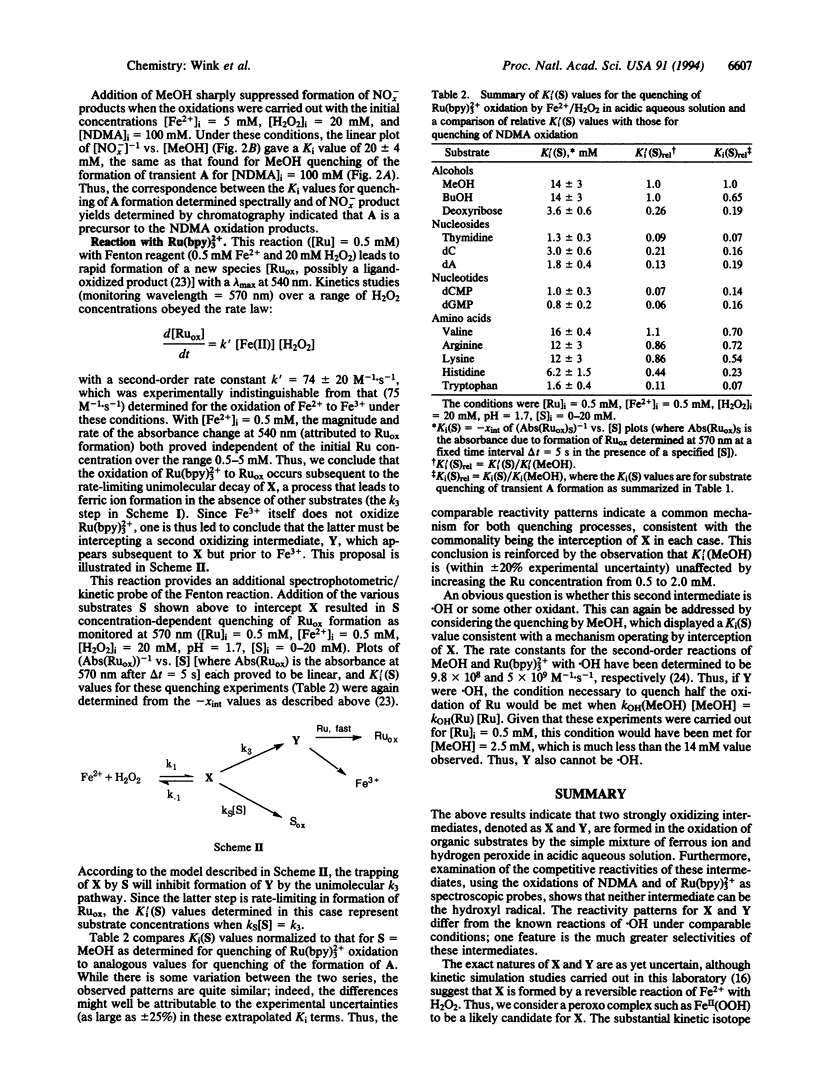
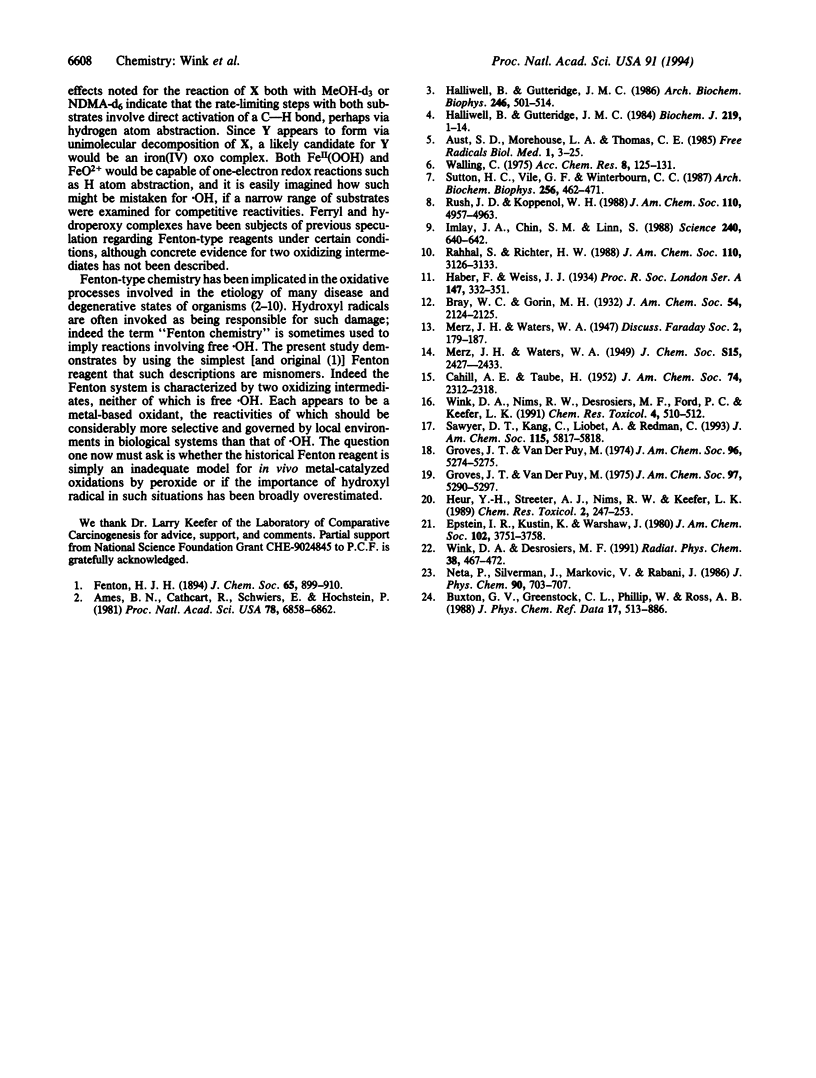
Selected References
These references are in PubMed. This may not be the complete list of references from this article.
- Ames B. N., Cathcart R., Schwiers E., Hochstein P. Uric acid provides an antioxidant defense in humans against oxidant- and radical-caused aging and cancer: a hypothesis. Proc Natl Acad Sci U S A. 1981 Nov;78(11):6858–6862. doi: 10.1073/pnas.78.11.6858. [DOI] [PMC free article] [PubMed] [Google Scholar]
- Aust S. D., Morehouse L. A., Thomas C. E. Role of metals in oxygen radical reactions. J Free Radic Biol Med. 1985;1(1):3–25. doi: 10.1016/0748-5514(85)90025-x. [DOI] [PubMed] [Google Scholar]
- Halliwell B., Gutteridge J. M. Oxygen free radicals and iron in relation to biology and medicine: some problems and concepts. Arch Biochem Biophys. 1986 May 1;246(2):501–514. doi: 10.1016/0003-9861(86)90305-x. [DOI] [PubMed] [Google Scholar]
- Halliwell B., Gutteridge J. M. Oxygen toxicity, oxygen radicals, transition metals and disease. Biochem J. 1984 Apr 1;219(1):1–14. doi: 10.1042/bj2190001. [DOI] [PMC free article] [PubMed] [Google Scholar]
- Heur Y. H., Streeter A. J., Nims R. W., Keefer L. K. The Fenton degradation as a nonenzymatic model for microsomal denitrosation of N-nitrosodimethylamine. Chem Res Toxicol. 1989 Jul-Aug;2(4):247–253. doi: 10.1021/tx00010a006. [DOI] [PubMed] [Google Scholar]
- Imlay J. A., Chin S. M., Linn S. Toxic DNA damage by hydrogen peroxide through the Fenton reaction in vivo and in vitro. Science. 1988 Apr 29;240(4852):640–642. doi: 10.1126/science.2834821. [DOI] [PubMed] [Google Scholar]
- Sutton H. C., Vile G. F., Winterbourn C. C. Radical driven Fenton reactions--evidence from paraquat radical studies for production of tetravalent iron in the presence and absence of ethylenediaminetetraacetic acid. Arch Biochem Biophys. 1987 Aug 1;256(2):462–471. doi: 10.1016/0003-9861(87)90603-5. [DOI] [PubMed] [Google Scholar]
- Wink D. A., Nims R. W., Desrosiers M. F., Ford P. C., Keefer L. K. A kinetic investigation of intermediates formed during the Fenton reagent mediated degradation of N-nitrosodimethylamine: evidence for an oxidative pathway not involving hydroxyl radical. Chem Res Toxicol. 1991 Sep-Oct;4(5):510–512. doi: 10.1021/tx00023a002. [DOI] [PubMed] [Google Scholar]


